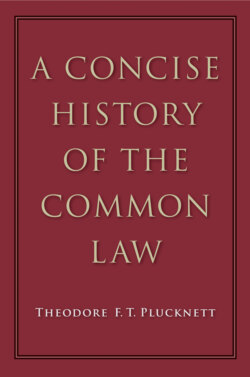Читать книгу A Concise History of the Common Law - Theodore F. T. Plucknett - Страница 82
На сайте Литреса книга снята с продажи.
THE VILL IN AGRICULTURE
ОглавлениеThe one bond which holds the vill together is a system of communal agriculture. The machinery necessary was expensive, for the plough of eight oxen was often beyond the means of any individual villager, and so we find that the vill co-operated in the performance of a good many of the more difficult operations of farming. Besides this, after harvest the fields were thrown open and all the villagers turned their cattle into them, as well as on to the field which for that year was remaining fallow (for the general system was to have two or three fields one of which was left fallow each year).
From what has just been said it will be obvious that there were many features of the agricultural life of the vill which would need regulation, and in spite of Maitland’s doubts it seems now fairly clear that there was a moot in the vill which ordered its economic life, made bylaws and enforced their observance. It is tempting to regard the numerous “halimotes” of which we have evidence as being survivals of the earlier vill moot. To the eyes of some historians the co-operative element in the village community appears so strong that they describe it as an agrarian communism; but at this point we again touch upon a difficult and controversial subject upon which we can here say no more than that it is almost as difficult to prove a true agrarian communism as it is to find the modern notion of individual private property in land. There has been a great deal of conjecture as to the probable character of the primitive village community, and much of it has removed the question from the realm of history into that of speculative pre-history.1
Whatever its origin, the mediaeval village community was dissolved in the sixteenth and eighteenth centuries as a result of the great enclosure movements promoted by landowners with two distinct objects—first, to abandon the old system of strips,2 re-survey the land and allot to each holder a compact area instead of his scattered strips, and also to enclose portions of the common land and restrict them to private use, generally of the lord of the manor.
